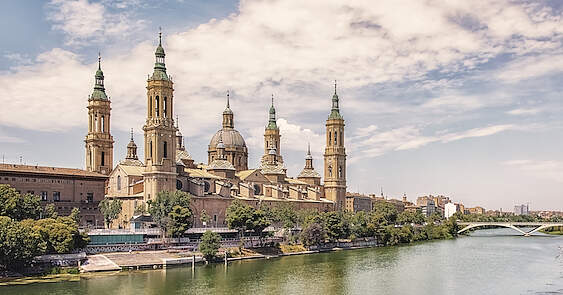
According to the tradition that the apostle St. James, while in Spain, had a vision of the Virgin Mary on top of a column (El Pilar shrine, in Zaragoza, Aragon), Spain has been a Marian land since the first century. James’ actual name was Yaakov or Jacob Bar-Zebdi, but we know him as James the son of Zebedee, James the Greater (to differentiate him from the other apostle James, the son of Alpheus, called the Minor), or by his Spanish name Santiago. According to Christian accounts, he was born around 5 B.C. in Galilee, the son of Zebedee and Mary Salome, and was the older brother of John, also an apostle.
James was present in all the most important episodes of the Gospels. He was one of the three apostles who witnessed the transfiguration (metamorphosis) of Jesus, when he was transformed and showed his divine nature as he stood between the prophets Elijah and Moses. James also witnessed the agony and prayer of Jesus in the Garden of Olives along with Peter and his brother John. After the Resurrection, he was in the small group that saw Jesus at Lake Tiberias and participated in the miraculous fishing. The Acts of the Apostles tell us that he was among those who received the Holy Spirit in the form of tongues of fire on the day of Pentecost (around the year 33 AD).
After that day James took up his staff and his boat to travel west and evangelize Spain.
This tradition was however not recorded until the 12th century. The Shrine of Santiago de Compostela, very dear to the hearts of the Spaniards, received the visit of Pope John Paul II.
Archaeologists have also found a church of "Mary" dating from the 2nd century - before the persecution of Decius (200-251) - in Merida, Spain (the capital of the province of Estremadura), and under the Shrine of Our Lady of the Pillar is an ancient basilica from the 3rd and 4th centuries, dedicated to the Assumption of Mary.
At the end of the 5th century, the Hispanic liturgy began to exalt Mary as the new Eve, the Mother of God and our Mother, the Mediatrix of graces, the ever Virgin, ascended to Heaven, image of the Church.
The most important Spanish shrines are: the Cathedral-Basilica of Our Lady of the Pillar in Zaragoza (in Aragon); the Santa Maria de Montserrat monastery on the Montserrat Mountain (in Catalonia), Our Lady of Arantzazu, a Franciscan sanctuary located in Oñati (Basque Country) , and the Almudena Cathedral in Madrid.
Let us also remember that the reform of the Carmel, begun in Avila in the 16th century, was placed under the protection of Our Lady and St. Joseph.